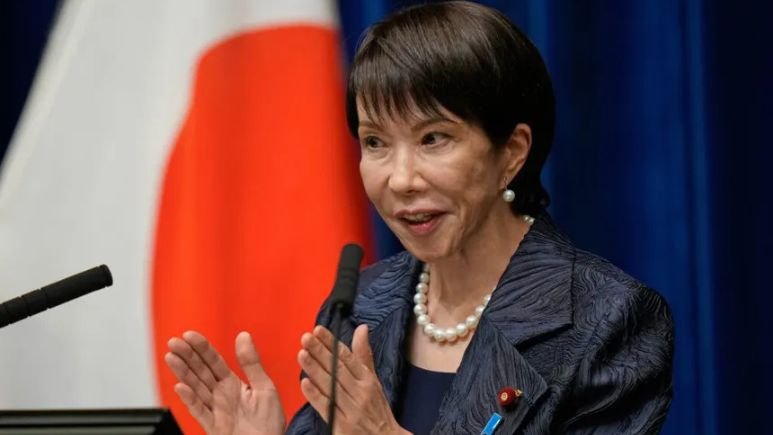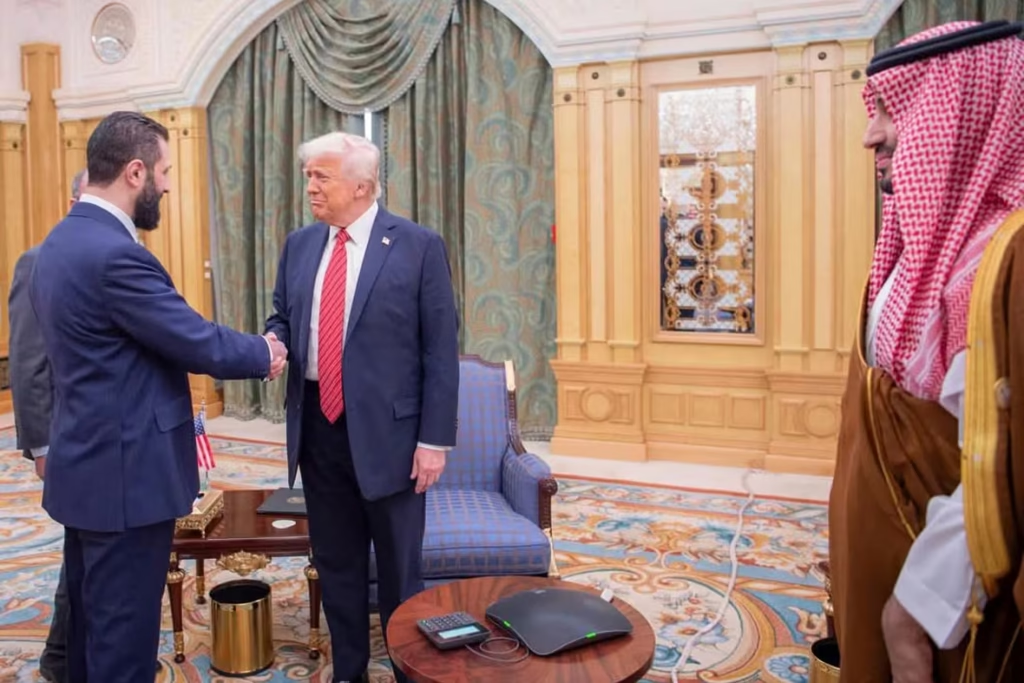Japan’s new Prime Minister Sanae Takaichi has triggered a diplomatic crisis with China after declaring that a Chinese attack on Taiwan could justify Japanese military action.
Takaichi broke with years of precedent last Friday by hinting in parliament that Japan could provide military support for Taiwan under certain “worst-case” scenarios. The statement drew immediate condemnation from Beijing and revealed the fault lines that will define her premiership.
Relations between Tokyo and Beijing have dramatically soured, with nationalist rhetoric in China and an apparent threat of beheading from one of its diplomats. The controversy centers on Sanae Takaichi Taiwan policy and whether it represents a fundamental shift in Japan’s strategic posture.
Just two weeks after shaking hands with Chinese President Xi Jinping at the APEC summit, Takaichi finds herself navigating Japan’s most serious diplomatic crisis in years.
The parliament statement that changed everything
On November 7, Takaichi told Japan’s parliament that China using armed force against Taiwan could constitute a “survival-threatening situation” for Japan, allowing the country to mobilize its armed forces under security laws.
The comment marked a watershed moment. While former Prime Minister Abe Shinzo made similar remarks after leaving office, no incumbent leader had ever publicly linked Japan’s security so directly to Taiwan’s fate.
During the parliamentary session, an opposition lawmaker asked whether a Chinese naval blockade of Taiwan would qualify as a survival crisis. Takaichi responded that “the situation regarding Taiwan has become serious. We must assume the worst-case scenario”.
She clarified that not all Taiwan Strait disruptions would meet the threshold. Civilian vessels forming a blockade line would not qualify for military response, she noted.
The distinction matters legally. Under Japan’s Constitution, which renounces war, Tokyo can only use force when facing an imminent threat to national survival.
Beijing’s furious response
China’s reaction was swift and unprecedented in its hostility.
A Chinese diplomat wrote on social media: “China’s battle blade for beheading invaders has been sharpened to a very keen edge. If Japanese militarism wishes to come to the Taiwan Strait to sacrifice themselves on our blades, we will fulfill them”.
The violent imagery shocked Japanese officials and marked a return to China’s “wolf warrior” diplomacy style.
Beijing’s Foreign Ministry issued formal protests. Chinese state media labeled Takaichi as “anti-China” and an “extreme right-winger” on social media platforms.
The timing couldn’t be more sensitive. This year marks the 80th anniversary of what China calls its “victory in the People’s War of Resistance Against Japanese Aggression.” China held a massive military parade with over 25 world leaders attending.
Analysts in Beijing are particularly wary that Takaichi could challenge the “three red lines”: Taiwan, territorial disputes, and historical interpretation.
The backpedaling that wasn’t
Days after her initial comments, Takaichi refused to withdraw her remarks but softened them by claiming she did not intend to contradict prior governments’ stances.
On Monday, Takaichi said her comments were “hypothetical” and said she would avoid making similar statements in parliament again.
But the clarification revealed the constraints on Sanae Takaichi Taiwan policy more than any change of heart. She noted that any decision on what constitutes a “survival crisis” would depend on a “comprehensive assessment” at the time of an actual conflict.
Defense Minister Koizumi Shinjiro promptly emphasized that declaring a survival crisis would require collective Cabinet assessment. Chief Cabinet Secretary Kihara Minoru insisted Takaichi’s statement didn’t alter Japan’s long-standing position.
The quick responses from other government members illustrated the resilience of Japan’s bureaucratic caution.
The Abe legacy and quasi-alliance vision
Takaichi positions herself as the political heir to former Prime Minister Shinzo Abe. Abe was lauded in Taiwan for saying “a Taiwan emergency is a Japanese emergency,” though he made this statement after stepping down as prime minister.
Takaichi elaborated on this formula during an April 2025 visit to Taiwan, clarifying that because Japan is an island country, any regional conflict that threatens sea routes could threaten Japan’s food and energy security and pose an existential risk.
Her April Taiwan trip produced the most provocative element of Sanae Takaichi Taiwan policy. Takaichi said at a meeting in Taipei that Japan, Taiwan, Europe, Australia, and India should form a “quasi-security alliance” to protect each other’s interests.
The proposal raised eyebrows globally. None of the countries Takaichi mentioned has formal diplomatic relations with Taiwan, which adds a major complication to defense cooperation.
She also met with Taiwan’s President Lai Ching-te during that visit, reinforcing her reputation as Taiwan’s strongest ally in Japanese politics.
Walking the tightrope
Takaichi faces an impossible balancing act.
China remains Japan’s largest trading partner, and Takaichi inherited a country facing mounting economic woes. Japan cannot afford a complete rupture with Beijing.
Yet her political identity revolves around security hawkishness. She supports revising Article 9 of Japan’s Constitution, which renounces the use of military force, and favours a pro-Taiwanese foreign policy and strengthening the US-Japan alliance.
After her October 31 meeting with Xi Jinping at the APEC summit, tensions flared again when Takaichi posted a picture of herself meeting with Taiwan’s presidential adviser Lin Hsin-i. She called for deeper “practical cooperation” with Taipei.
The post infuriated Beijing, which views any official-level contacts between other governments and Taiwan as provocations.
During her tenure as Japan’s first minister of economic security, she promoted “decoupling” initiatives, advocating supply chains that bypass China.
Constitutional constraints
Despite her bold rhetoric, Sanae Takaichi Taiwan policy faces fundamental legal barriers.
Article 9 of Japan’s Constitution, which renounces war and the use of force, remains the ultimate constraint. Any active participation in a Taiwan conflict would require legal, political, and public consensus – none of which currently exists.
The Japanese public remains deeply pacifist. Polls consistently show reluctance to expand military commitments, especially involving combat operations.
Japan’s Self-Defense Forces, while increasingly capable, have never engaged in offensive combat operations since World War II. Crossing that threshold would require more than prime ministerial statements.
The United States also maintains “strategic ambiguity” about defending Taiwan militarily. Washington has avoided explicit commitments while selling defensive weapons to Taipei.
Taiwan’s perspective
Taiwan welcomed Takaichi’s ascension enthusiastically.
Taiwanese scholars expressed optimism, noting that Takaichi is considered “Taiwan-friendly” and aligns with the late Prime Minister Abe’s policy direction.
Professor Li Shui-hui suggested Taiwan’s government should prepare for “substantial breakthroughs” between the two sides once Takaichi settles into office.
Taiwan sees Japan as a critical security partner. The island lies just 60 miles from Japanese territory. Takaichi has called for Taiwan and Japan to jointly bolster economic security through strategic partnerships in semiconductors and artificial intelligence.
These technological partnerships matter as much as security cooperation. Taiwan produces over 90% of the world’s most advanced semiconductors, making it economically vital to Japan’s industrial base.
What comes next?
Sanae Takaichi Taiwan policy will continue evolving under multiple pressures.
Whether this marks a fundamental shift in Japan’s Taiwan policy or merely another round of rhetorical testing within its long-standing framework of strategic ambiguity remains unclear.
Her hawkish statements may be partly for domestic political consumption. Japan faces elections, and projecting strength against China plays well with conservative voters.
Takaichi’s leadership may signal renewed energy in Japan’s engagement with the Quad the security partnership with the United States, India, and Australia.
The December vote on healthcare subsidies that she promised Senate Democrats will test whether she can navigate domestic politics while managing the China crisis.
But the fundamental question persists: Can Japan signal deterrence and support for Taiwan without crossing constitutional red lines or triggering military confrontation with China?
The broader stakes
The controversy over Sanae Takaichi Taiwan policy reflects deeper shifts in Asian geopolitics.
China’s military has conducted increasingly aggressive operations around Taiwan. Chinese warplanes regularly cross the median line in the Taiwan Strait. Naval exercises simulate blockade scenarios.
Japan watches nervously. A Chinese-controlled Taiwan would give Beijing naval dominance over crucial sea lanes that carry Japan’s energy imports and trade.
Meanwhile, Japan’s alliance with the United States shows strain. Former President Trump questioned the alliance’s value during his previous term. His return to power has revived those concerns in Tokyo.
Some in Japan worry that the Japan-U.S. security alliance is no longer enough to guarantee the country’s security.
Takaichi’s quasi-alliance proposal reflects this anxiety a search for additional security partners beyond Washington.
A PM under pressure
Sanae Takaichi has been Japan’s prime minister for less than a month. Already she faces a diplomatic crisis that veteran politicians have avoided for decades.
Her remarks about Taiwan military intervention pushed boundaries that previous leaders carefully respected. Whether this represents conviction, calculation, or inexperience remains debated in Tokyo.
What’s certain is that Sanae Takaichi Taiwan policy has fundamentally altered the China-Japan relationship. Beijing will view every Tokyo statement through the lens of this controversy.
For Taiwan, Takaichi represents the strongest support from a Japanese leader in history. For China, she embodies their worst fears about Japanese militarism.
The woman who broke Japan’s political glass ceiling now finds herself caught between competing imperatives: protecting Japan’s security interests, managing economic dependence on China, honoring constitutional pacifism, and supporting Taiwan’s democracy.
How she navigates these contradictions will define not just her premiership but potentially the future stability of East Asia. The stakes have never been higher. And the margin for error has never been smaller.


